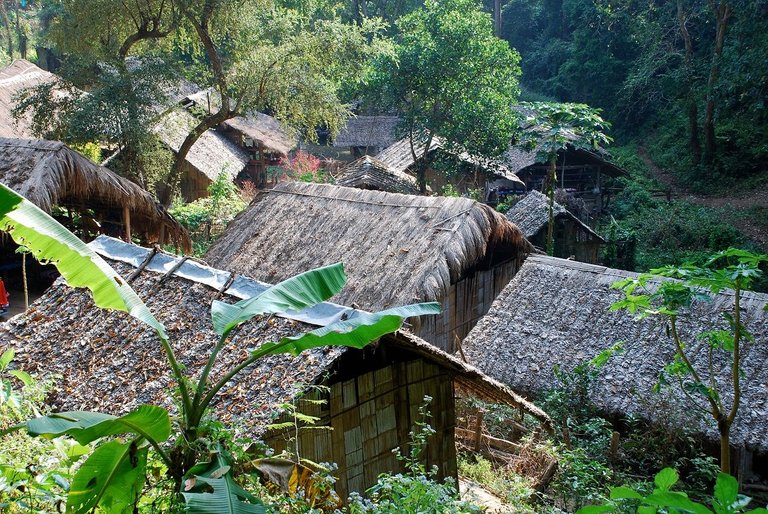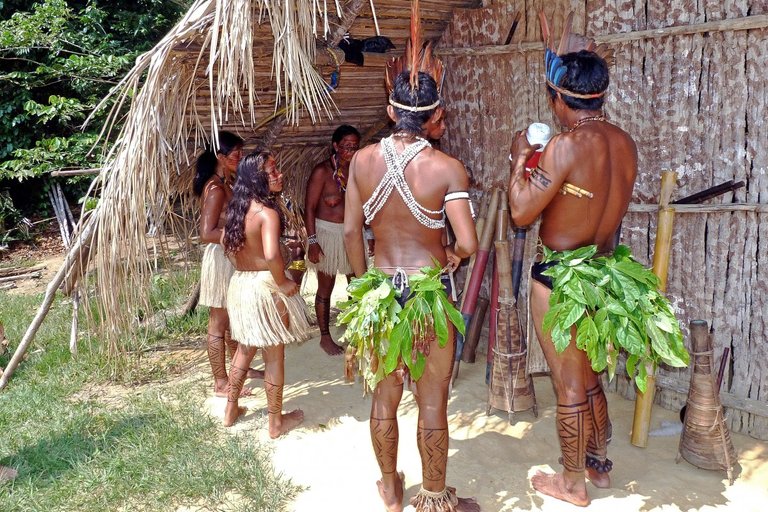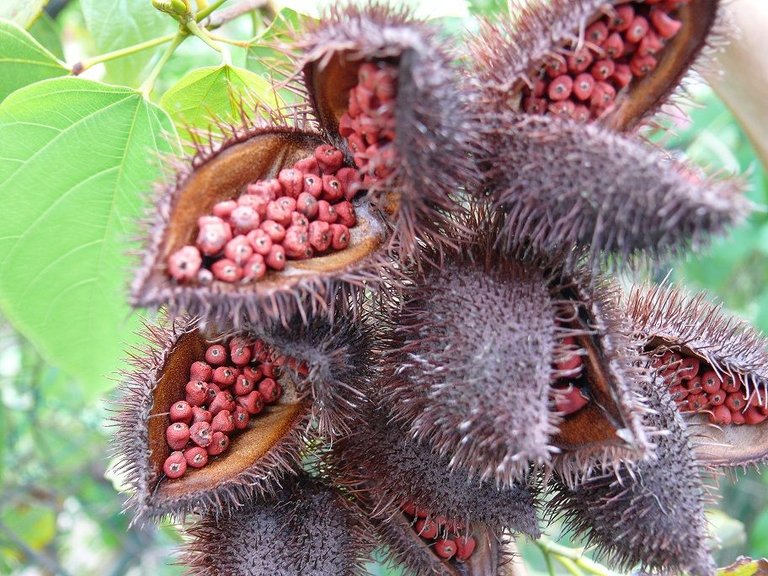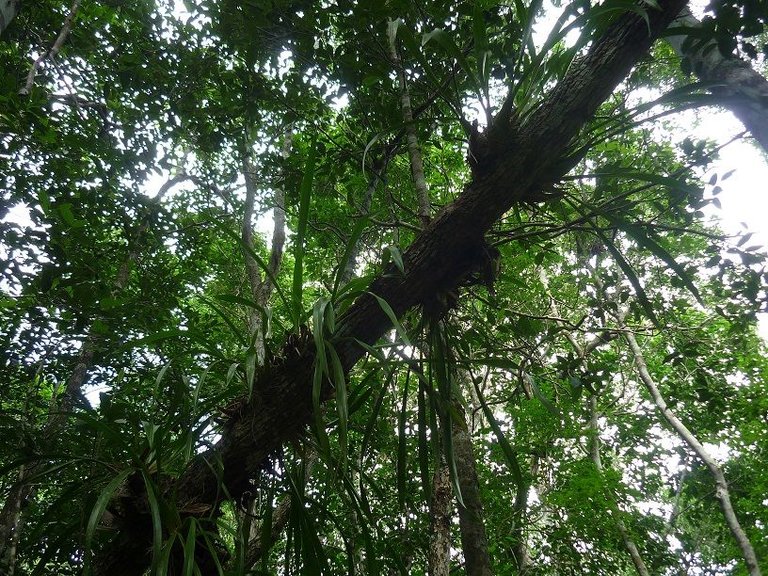Today I want to start a series that combines science and prose writing. In this series I will try to walk you through the process of drug development. There are many steps, and many people involved in the creation of a drug. My goal is to capture you in the story, while adding in current research. Thus, I have the ambition to entertain, and educate at the same time. I will include sources in the text when I am talking about technology or methods used. Granted, this is a very difficult task, but I believe that it may be very rewarding for you, the reader, and I, the writer. That being said, I hope you enjoy this piece of scientific story-telling.
We will now go on a journey that will lead to a fictional drug, that was found and developed under fictional circumstances by fictional characters. I usually write about scientific studies, so please forgive me if I ever tend to be too technical in my story.
Part 1 - Discovering Drug Candidates In New Ways
It has been a hot summer day somewhere in the middle-American jungle. My whole crew and I were wandering on hidden paths, that nobody but our guide Fernando could see through the heavy vegetation.
Fernando is a member of a native clan that lives deep in the jungle and he spent his entire youth there. When he became older, he decided to leave his village and search for a better life in the cities, just like many other young tribe's men.
We met Fernando while we were trying to learn about regional folklore. I am an anthropologist, specializing in ancient Latin American culture. However, this tour is not just about studying ancient traditions of isolated tribes, but also to learn about their herbal medicine. My friend, Dr. Calderon, has worked together with Fernando to learn more about the impact that deforestation has on the life of Fernand's tribe. Fernando had been meeting with his tribe's men and interviewed them on Dr. Calderon's behalf. When Fernando mentioned to Dr. Calderon that his people were worried about losing their medicine tree, Dr. Calderon set up a meeting with Fernando. During our talk, it became evident to me that Fernando's people are aware of a variety of medical plants, some of which I have never heard of. After a first visit to the tribe, I heard stories that "medicine tree" which is used to treat infections. Sadly, the village elders did not allow me to take samples and so I had to return without much, but a lead. However, the stories I was able to share back at my university were convincing enough to receive money for a longer trip. The hope is that I will be able to convince Fernando's tribe to share their knowledge and some samples with me. The pharma industry is struggling to find new active ingredients. We are still learning new ways to identify new candidates for drug discovery, but we cannot outperform nature, which had far more time to develop chemicals than humanity had even existed. This acknowledgement led to a new trend to search for drug candidates in nature (1) That's why we are here.
Fernando has led us on this path for hours now. Sweat was running down our faces and the heat was exhausting. We had heavy backpacks on our backs and various insects were bugging us. The thing that kept me going was that, if this “medicine tree” had an interesting compound in its cells, my discovery could save many lives.

After hours we finally arrived. We were immediately surrounded by groups of children, wearing old t-shirts and sandals. Even this isolated tribe has been reached by our culture, even though they were able to maintain most of their lifestyle and traditions. We were met by the village elders, who shared the few delicacies the forest could offer. Fernando posed as translator and guided us through the various foods the women of the tribe prepared for us. When the night approached, we were offered a cabin by the elders. We gladly accepted and set up our camp. It has been an exhausting day, but the insects kept me from sleeping and I awoke several times during the night. We all had gotten prophylactic treatment against malaria. Yet, even though treatment of malaria has become more effective, there was still a risk left (2). Not to mention that we were hours away from the next hospital and the way back is a challenge even for a healthy person.
We were accepted by the village community and observed the inhabitants doing their daily work. Life here was based on hard work and family. During the day we tried to talk to the villagers, and with Fernando´s help we were able to learn more about their customs. Every now and then we also heard about the “medicine tree”, but nobody would point it out to us. We figured out that only the shaman was knowing about the medicinal plants. The villagers could only tell us about the healing power of the tree.
An elderly lady told us the story of her son. One day he was playing in the jungle and got a deep cut from a low hanging branch of a tree with very rough bark. The boy immediately ran back to the village with blood running from his upper arm. The bleeding was stopped, but the boy soon developed a fever and showed symptoms that a modern doctor would diagnose as an infection at the wound side. The shaman prepared a paste from the “medicine tree” and applied it to the wound. He also made a broth from the tree and gave it to the boy to drink. After a few days, the boy´s condition improved and after a few more days he was healthy. We even met the man this boy had turned into, and he was as productive as the other men of the tribe. I really wanted to see this tree and take samples, but it would take time to get the trust of the villagers and the shaman.
After a few days I was finally introduced to the shaman. He was an old man, living by himself in a hut that was filled with all sorts of dried plant parts. Although he did not want to share his knowledge with us yet, he was very friendly and told us about how he became a shaman. For my mission, it was important to build a relationship with the shaman and convince him that we were trustworthy.

The following night, when I returned to our camp, I found Dan, one of the students that followed me on this trip, leaning over the railing that surrounded our elevated hut. The team´s doctor, Dr. Wright, was called to check out Dan. After an immediate check-up, he diagnosed Dan with a bacterial infection. It seemed like he caught it before our trip has started. The commotion soon attracted the village elders, who then called the shaman. Our doctor was going to give Dan a dose of antibiotics, however, the shaman stopped him, holding up his hands as if they were a bowl, pretending like he was drinking from it. He turned around and disappeared into the dark, only to return a few minutes later with a filled plastic bottle. I immediately understood that this might be the broth of the “medicine tree” and Fernando was able to confirm this with the shaman. Dan was given a few sips of the broth and then put in his field bed. The doctor assured me that Dan was not in imminent danger and that he could lay of the antibiotic treatment for a few days, as long as Dan was given enough liquid and electrolytes. While his words were meant to calm everybody down, nobody slept very well this night.
The next morning Dan seemed to be doing better. We decided it was best for him to stay in bed for a few more days. He was given the “medicine tree” broth until we ran out that same day. I went to the shaman with the empty bottle. When I showed it to him, he looked at me and nodded his head once, and then moved his head to tell me to follow him. We went behind his hut, through a little garden where I believe he grew more medicinal plants. After a few minutes, we arrived at a tree whose bark showed various bleak spots that must have been harvested. He cut a piece of bark and carried it back to his hut. I quickly took a picture, collected a sample from the bark, leave and even found some fruit that was carrying seeds. All of that I sealed in plastic bags.
Back in his hut the shaman showed me how he prepared the broth from the bark. He used a few other herbs, from which he tore a little piece. He then tore that piece in half and put one half in his mouth, chewing on it and showing me that they were for a better taste of the broth. I tried the herbs, but because I was not used to them, I did not enjoy them as much. After boiling the bark for what must have been an hour, he poured it into bowl and filtered out the solid parts that were swimming in the broth. When it cooled down, he filled it into a plastic bottle and gave it to me. I said thank you in the native language and returned to our camp. When I arrived, I saw Dan sitting at a table, eating a portion of instant noodles. He was obviously better and thankfully accepted the bottle with the broth. This "medicine tree" seemed to be very promising.
Inspired by Dan´s quick recovery, I decided to ask the shaman about some of his plants. He was not willing to share all his secrets but showed me a few plants that I have heard about, and a few I have never seen before. He allowed me to get a few samples, which I sealed and stored securely.

Our time in the village has come to an end and we packed our things. We celebrated a little feast with the villagers and presents were exchanged. The next morning, Fernando led us out of the jungle and back into the modern world. Back in the city, I immediately prepared the samples to be send to a colleague of mine at my university. His name was Dr. Williams, and he was an analytical chemist. Once the samples were sent, I had to finish some reports and manage my team. We were ready to return home and see if any of our samples would reveal a new potential drug.
Shameless Self-Advertisement
Yes, this is very different from what I usually write about. Yet, I was planning to do something like this for a while. This first post is deviating from what the coming posts will look like. I had to start the story somewhere, and I wanted to show that we are trying to find more creative ways to develop drugs than just in laboratories. There are actually people like the fictional anthropologist out there, working in similar ways as I described – however, often not as respectfully as I describes (3), (4)
This story was partly inspired by a documentary I saw on Youtube, published by Deutsche Welle. I will include the link to the video in this post.
http://www.dw.com/en/rain-forest-pharmacy-medicine-from-the-jungle/a-18763690
If you enjoyed this post and find it intriguing, please upvote and resteem. Also let me know in the comments what you think
I am getting more scientific in the following posts. My intention is to post this series with the SteemSTEM tag. Please let me know if this is not appropriate. I really value this community and I will stop posting this series under the SteemSTEM tag if you deem it unworthy.
Thank you very much. As always,
Cheers @lesshorrible!

It is very often, when you go to any tribe or village, you will always find such things. And they are using these medications (herbs and roots) for years and they work. All these informations are inherited through generations. If you go into details of such herbs you may end up with some new enzymes or some modified ones, and that could help to cure some diseases which are still not curable.
Thank you very much for actually reading the post and the upvote! Also thank you very much for your continuous support and your thoughtful comments @vinamra! Yes, I have read this book called "Surviving The Extremes" and a doctor who travelled to the Amazon was talking about the potential some of the plants natives of the jungle use in the discovery of new drugs. It seems like this approach is getting more popular and we really need new drugs (especially antibiotics). Cheers!
very nice post here,thanks.
Please, read the post and not just spam comments. Cheers
Will you write about Marijuana History from a biological view
nice post